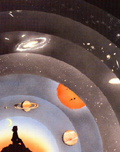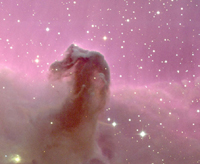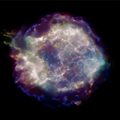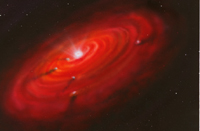
Lola Chaisson, Artist
Ever since the first stirrings of consciousness, humankind has lifted its eyes towards the mystery of the heavens and found solace in the contemplation of the seemingly peaceful and eternal panorama of the night sky. People of ancient cultures viewed the sky as the inaccessible home of the gods. They observed the daily motion of the stars, and grouped them into patterns and images. They assigned stories to the stars, relating to themselves and their gods. They believed that human events and cycles were part of larger cosmic events and cycles. The night sky was part of that cycle. The steady progression of star patterns across the sky was related to the ebb and flow of the seasons, the cyclical migration of herds and the hibernation of bears, the correct times to plant or harvest crops. Everywhere on Earth people watched and recorded this orderly procession with symbols carved into bones and antlers, paintings on elk hide and rocks, and stone monuments and alignments. The motions of the Sun, Moon, stars and planets served as their calendar, clock, and compass.

KPNO Horsehead Nebula Image
We still have not lost our fascination for the night sky. The colored and twinkling display overhead causes us to pause and reflect, invoking the same deep stirrings that our ancestors felt when they looked towards the stars. When we look up we feel connected to the grandeur of the sparkling array above us; however we no longer view the sky as inaccessible. Technological advances are taking us on a journey further and further into the universe - into the very hearts of stars - to listen to the rhythms of their pulsations, and begin to gain an understanding of the processes by which they evolve. We have discovered that the seemingly peaceful night sky is an illusion. Stars are not eternal - they are born of nuclear fires, they live, and ultimately die. Some stars die quietly, some literally tear themselves apart with violent explosions, while others undergo catastrophic collapse and disappear from the visible universe into extraordinarily dense black holes. We now have begun to understand that we are a part of that cycle, that Earth and life on Earth are connected to the lives of stars in the most profound and fundamental cycle of all - the continuous cycle of stellar birth, evolution, and death...and not only our origins lie within the stars - do does our future.

Chandra X-Ray Cas A Image
Approximately 14 billion years ago the space and time we call the universe came into existence, along with hydrogen, helium, and lithium. During the first 10 billion years galaxies were formed and stars were born. Many generations of massive stars underwent catastrophic core collapse and left behind supernovae remnants, neutron stars, pulsars and black holes. Elements heavier than lithium were synthesized during this process. Before the final collapse, these massive stars fused hydrogen to helium to carbon, oxygen, silicon, sulfur and iron. Elements heavier than iron were produced in the outer envelopes of the stars during the supernovae explosions and the resulting shock waves from the core collapse.

Dana Berry, Artist
This activity has been developed to assist students in acquiring a basic understanding and appreciation for the cosmic cycles of formation and destruction - and their connection to planet Earth.


